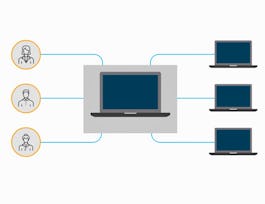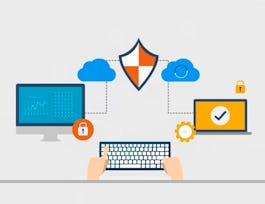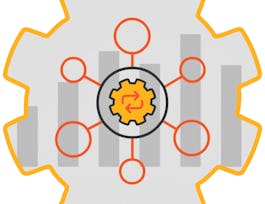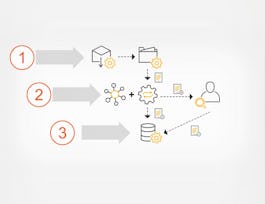Regardless of the industry, business process automation is here to stay. Business processes are increasingly being automated through software automation. But how is software automation simplified and made accessible? The answer is Robotic Process Automation or RPA.


RPA Lifecycle: Introduction, Discovery and Design
This course is part of Implementing RPA with Cognitive Automation and Analytics Specialization
Taught in English
Some content may not be translated

Instructor: Automation Anywhere, Inc.
15,921 already enrolled
Course
(507 reviews)
What you'll learn
Discuss the basics of RPA
Understand Automation Anywhere's RPA architecture
Use the Process Assessment Template to build an automation pipeline of business processes that need to be automated
Understand and perform feasibility and complexity analysis on the identified RPA candidates
Skills you'll gain
Details to know

Add to your LinkedIn profile
3 quizzes
Course
(507 reviews)
See how employees at top companies are mastering in-demand skills

Build your subject-matter expertise
- Learn new concepts from industry experts
- Gain a foundational understanding of a subject or tool
- Develop job-relevant skills with hands-on projects
- Earn a shareable career certificate


Earn a career certificate
Add this credential to your LinkedIn profile, resume, or CV
Share it on social media and in your performance review

There are 3 modules in this course
In this module, you will recall the basics of automation, distinguish RPA from traditional automation, discover the Digital Workforce platform and understand Automation Anywhere's RPA architecture and lifecycle.
What's included
7 videos1 quiz
In this module, you will Identify, sort, and brainstorm on eligible RPA candidates by analyzing business priorities. You will then, determine automation feasibility by examining the eligible processes and their logic and identifying roadblocks - using the Feasibility Matrix. Further, you will perform complexity assessment on the feasible processes using the Complexity Calculator to define input and output metrics.
What's included
10 videos1 quiz1 app item
In this module, you will determine the savings and cost of the automation opportunity using the ROI Calculator and then design the automation process using the Process Design Template and other documents.
What's included
11 videos1 quiz1 app item
Instructor

Offered by
Recommended if you're interested in Software Development

Automation Anywhere

Automation Anywhere

Automation Anywhere

Automation Anywhere
Why people choose Coursera for their career




Learner reviews
Showing 3 of 507
507 reviews
- 5 stars
68.44%
- 4 stars
24.45%
- 3 stars
4.14%
- 2 stars
2.36%
- 1 star
0.59%
New to Software Development? Start here.

Open new doors with Coursera Plus
Unlimited access to 7,000+ world-class courses, hands-on projects, and job-ready certificate programs - all included in your subscription
Advance your career with an online degree
Earn a degree from world-class universities - 100% online
Join over 3,400 global companies that choose Coursera for Business
Upskill your employees to excel in the digital economy
Frequently asked questions
Access to lectures and assignments depends on your type of enrollment. If you take a course in audit mode, you will be able to see most course materials for free. To access graded assignments and to earn a Certificate, you will need to purchase the Certificate experience, during or after your audit. If you don't see the audit option:
The course may not offer an audit option. You can try a Free Trial instead, or apply for Financial Aid.
The course may offer 'Full Course, No Certificate' instead. This option lets you see all course materials, submit required assessments, and get a final grade. This also means that you will not be able to purchase a Certificate experience.
When you enroll in the course, you get access to all of the courses in the Specialization, and you earn a certificate when you complete the work. Your electronic Certificate will be added to your Accomplishments page - from there, you can print your Certificate or add it to your LinkedIn profile. If you only want to read and view the course content, you can audit the course for free.
If you subscribed, you get a 7-day free trial during which you can cancel at no penalty. After that, we don’t give refunds, but you can cancel your subscription at any time. See our full refund policy.

